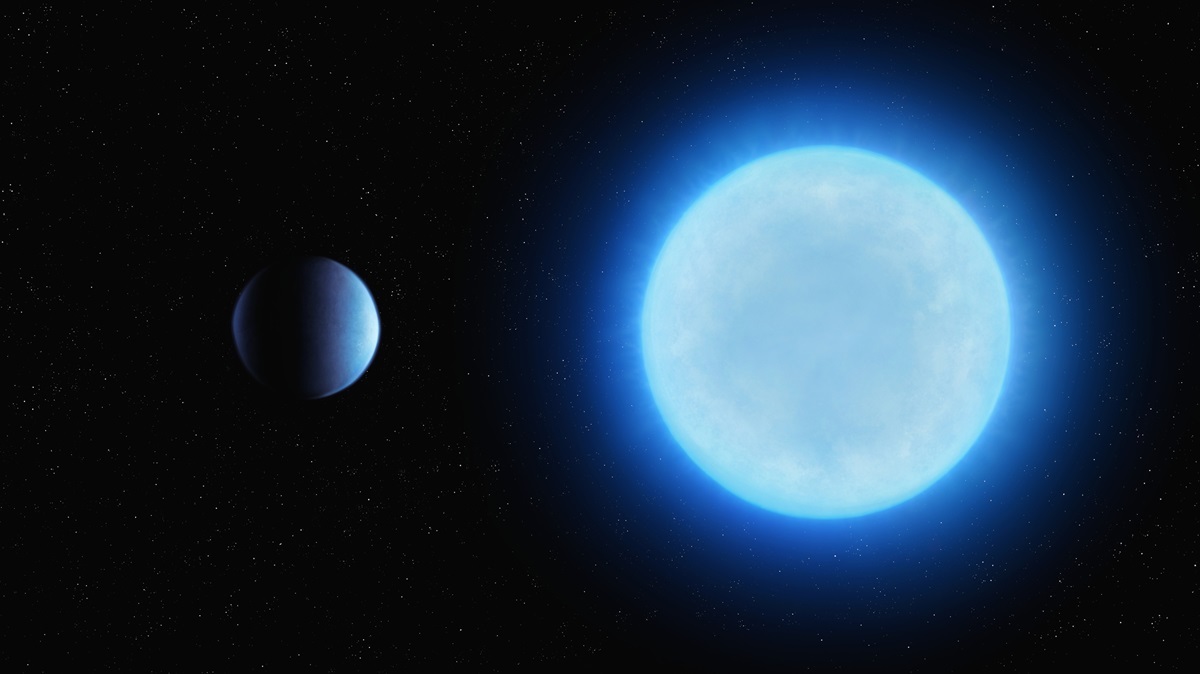28.09.2024
A newly discovered exoplanet shows us what Earth will be like billions of years after it meets its violent end at the hands of our expanding Sun.
Humanity probably won’t be around to see the Earth’s demise – it’s estimated all organic life will be wiped off the planet in a billion years or so as the Sun gets brighter and hotter.
But in 5 billion years, our Sun will begin its slow death – when it runs out of its main fuel source, hydrogen. Gravity will then pull gases around the core – still filled with hydrogen – inward to create a thin shell around the core Compression in the Sun’s centre will lead to a massive expansion of the Sun’s outer layers.
At this “red giant” stage, the Sun will expand so much it will engulf the inner planets – Mercury, Venus and possibly Earth. It may even reach Mars, about 228 million km from the current surface of the Sun.
As it expands, the Sun will cool. After about a billion years, the outer layers will dissipate into space leaving behind its core – a white dwarf star.

Rocky exoplanet orbiting a white dwarf star. Credit: Nazarii Neshcherenskyi / iStock / Getty Images Plus.
Researchers observing this newly discovered exoplanet say if Earth isn’t engulfed, it will sit in an orbit around the Sun about twice as far away as it is today.
The white dwarf – about half the Sun’s current mass – will last for about 10 billion years before the stellar remnant fades into black lumps of carbon.
What will Earth be like during the Sun’s white dwarf phase? A paper published in Nature Astronomy, gives us a glimpse of Earth’s fate in 8 billion years by observing this new exoplanet, which is about 4,000 light years away.
The exoplanet – KMT-2020-BLG-0414 – is about the same size as Earth. Its orbit is between 1 and 2 times the distance of Earth’s orbit around the Sun.
“We do not currently have a consensus whether Earth could avoid being engulfed by the red giant sun in 6 billion years,” says study lead Keming Zhang, a former doctoral student at the University of California (UC), Berkeley, now at UC San Diego.

So, what does Zhang think humanity – assuming our descendants survive the next few billion years – could do to make it through the Sun’s red giant phase?
“As the Sun becomes a red giant, the habitable zone will move to around Jupiter and Saturn’s orbit, and many of these moons will become ocean planets. I think, in that case, humanity could migrate out there,” Zhang says.
Quelle: COSMOS
